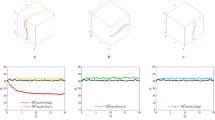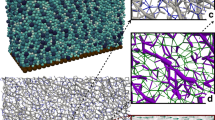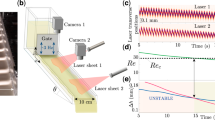Abstract
ONE of the most general problems in technical rheology is that of relating the flow properties of solid-in-liquid suspensions to the physical properties of the separate liquid and solid phases. The Bituminous Materials Section of the Road Research Laboratory has been interested for some time in the behaviour of systems consisting of fine mineral powders dispersed to very high concentrations in tars and bitumens which are substantially Newtonian liquids of high viscosity. The problem to be solved can be stated in the form of the following question: What physical characteristics of dry powders determine the relative viscosity of powder-in-liquid dispersions over the widest possible range of concentration ? The Einstein equation and various modifications and elaborations of it for higher concentrations have not provided the answer to this question.
This is a preview of subscription content, access via your institution
Access options
Subscribe to this journal
Receive 51 print issues and online access
$199.00 per year
only $3.90 per issue
Buy this article
- Purchase on Springer Link
- Instant access to full article PDF
Prices may be subject to local taxes which are calculated during checkout
Similar content being viewed by others
References
Rigden, P. J., J. Soc. Chem. Indust., 66, (9), 299 (1947).
Rigden, P. J., J. Soc. Chem. Indust., 66 (4), 130 (1947); Nature, 157, 268 (1946).
Author information
Authors and Affiliations
Rights and permissions
About this article
Cite this article
RIGDEN, P. Rheology of Suspensions of High Solid Concentration. Nature 167, 197–198 (1951). https://doi.org/10.1038/167197a0
Issue Date:
DOI: https://doi.org/10.1038/167197a0
This article is cited by
-
Multiple Effects of the Second Fluid on Suspension Viscosity
Scientific Reports (2015)
-
How to Decrease the Viscosity of Suspension with the Second Fluid and Nanoparticles?
Scientific Reports (2013)
Comments
By submitting a comment you agree to abide by our Terms and Community Guidelines. If you find something abusive or that does not comply with our terms or guidelines please flag it as inappropriate.



